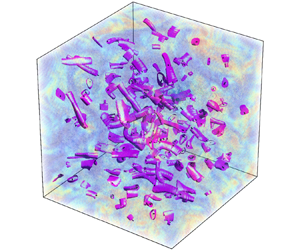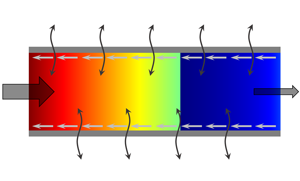doi:10.1017/jfm.2023.746 Dritschel & Tobias The magnetic non-hydrostatic shallow-water model
Contents
JFM Rapids
A scaling law for the length of granular jumps down smooth inclines
-
- Published online by Cambridge University Press:
- 10 October 2023, R1
-
- Article
-
- You have access
- HTML
- Export citation
General solutions of the plume equations: towards synthetic plumes and fountains
-
- Published online by Cambridge University Press:
- 17 October 2023, R2
-
- Article
-
- You have access
- Open access
- HTML
- Export citation
Turbulent wall plumes with detrainment
-
- Published online by Cambridge University Press:
- 18 October 2023, R3
-
- Article
-
- You have access
- Open access
- HTML
- Export citation
Gravity-driven flow in a cross-bedded porous rock
-
- Published online by Cambridge University Press:
- 23 October 2023, R4
-
- Article
-
- You have access
- Open access
- HTML
- Export citation
Heat transfer in a quasi-one-dimensional Rayleigh–Bénard convection cell
-
- Published online by Cambridge University Press:
- 23 October 2023, R5
-
- Article
-
- You have access
- HTML
- Export citation
Entropy and fluctuation relations in isotropic turbulence
- Part of:
-
- Published online by Cambridge University Press:
- 23 October 2023, R6
-
- Article
-
- You have access
- Open access
- HTML
- Export citation
JFM Papers
Reynolds number dependence of azimuthal and streamwise pipe flow structures
-
- Published online by Cambridge University Press:
- 10 October 2023, A1
-
- Article
-
- You have access
- Open access
- HTML
- Export citation
Motion of a viscous slug on heterogeneous surfaces: crossover from stick–slip to steady sliding
-
- Published online by Cambridge University Press:
- 10 October 2023, A2
-
- Article
- Export citation
Multiscale model reduction for incompressible flows
-
- Published online by Cambridge University Press:
- 11 October 2023, A3
-
- Article
-
- You have access
- Open access
- HTML
- Export citation
Pilot-wave dynamics in a rotating frame: the onset of orbital instability
-
- Published online by Cambridge University Press:
- 10 October 2023, A4
-
- Article
- Export citation
Entrainment, detrainment and enstrophy transport by small-scale vortex structures
-
- Published online by Cambridge University Press:
- 10 October 2023, A5
-
- Article
-
- You have access
- Open access
- HTML
- Export citation
The onset and saturation of the Faraday instability in miscible fluids in a rotating environment
-
- Published online by Cambridge University Press:
- 12 October 2023, A6
-
- Article
-
- You have access
- Open access
- HTML
- Export citation
Density effects on streamwise-orientated vorticity at river confluences: a laboratory investigation
-
- Published online by Cambridge University Press:
- 02 November 2023, A7
-
- Article
-
- You have access
- Open access
- HTML
- Export citation
Nonlinear dynamics and acoustic radiation of coherent structures consisting of multiple ring–helical modes in the near-nozzle region of a subsonic turbulent circular jet
-
- Published online by Cambridge University Press:
- 11 October 2023, A8
-
- Article
- Export citation
RETRACTED – Reynolds-number scaling and convergence time scale in two-dimensional Rayleigh–Bénard convection
-
- Published online by Cambridge University Press:
- 11 October 2023, A9
-
- Article
-
- You have access
- Open access
- HTML
- Export citation
Analysis of the choking condition of one-dimensional diabatic flows with wall friction
-
- Published online by Cambridge University Press:
- 12 October 2023, A10
-
- Article
- Export citation
Hydrodynamic force on a small squirmer moving with a time-dependent velocity at small Reynolds numbers
-
- Published online by Cambridge University Press:
- 13 October 2023, A11
-
- Article
- Export citation
Physics-constrained deep reinforcement learning for flow field denoising
-
- Published online by Cambridge University Press:
- 13 October 2023, A12
-
- Article
-
- You have access
- Open access
- HTML
- Export citation
Emergence of long-range correlations and thermal spectra in forced turbulence
-
- Published online by Cambridge University Press:
- 16 October 2023, A13
-
- Article
-
- You have access
- Open access
- HTML
- Export citation
Characteristic scales during the onset of radiatively driven convection: linear analysis and simulations
-
- Published online by Cambridge University Press:
- 16 October 2023, A14
-
- Article
-
- You have access
- Open access
- HTML
- Export citation











































































